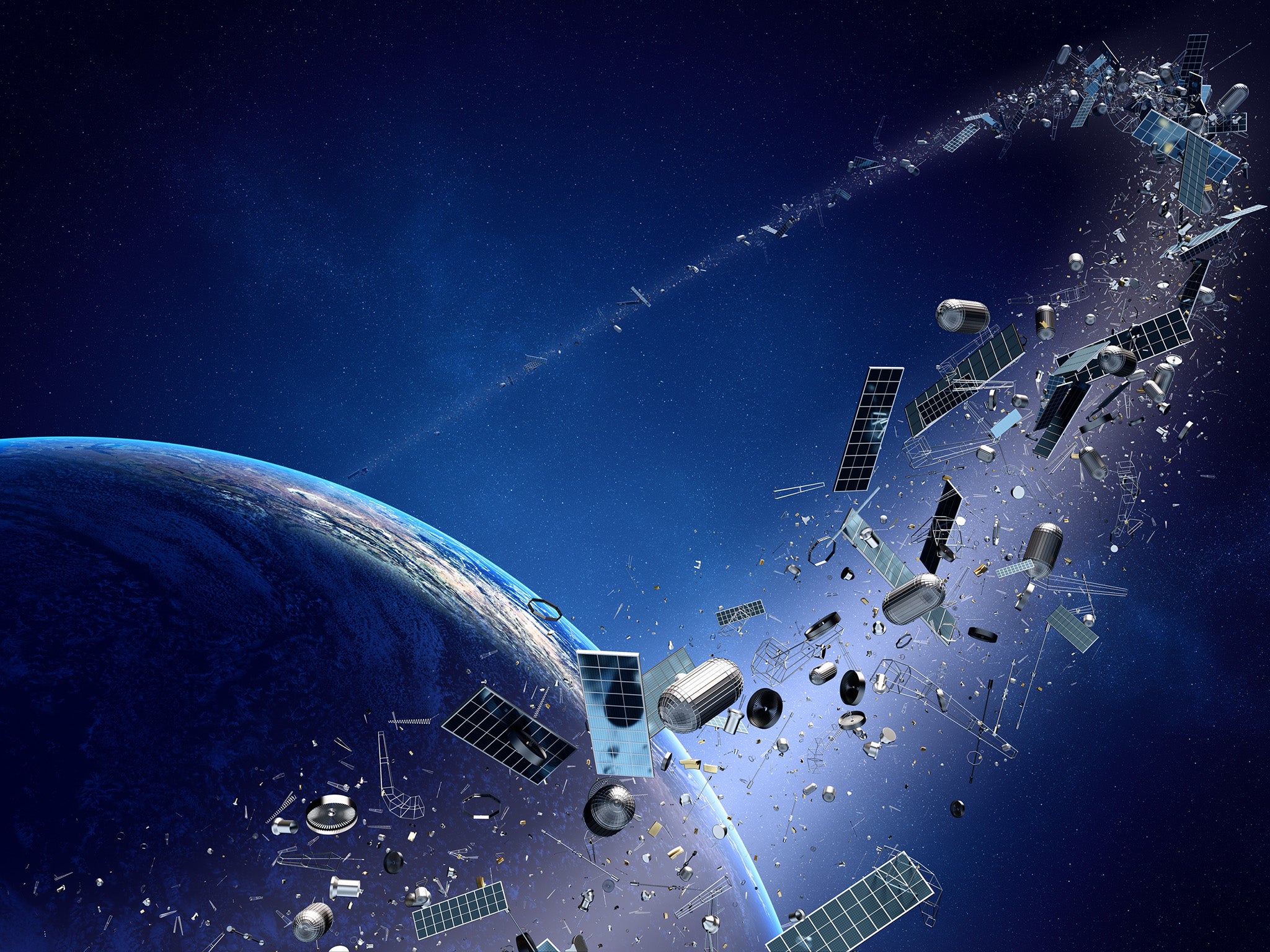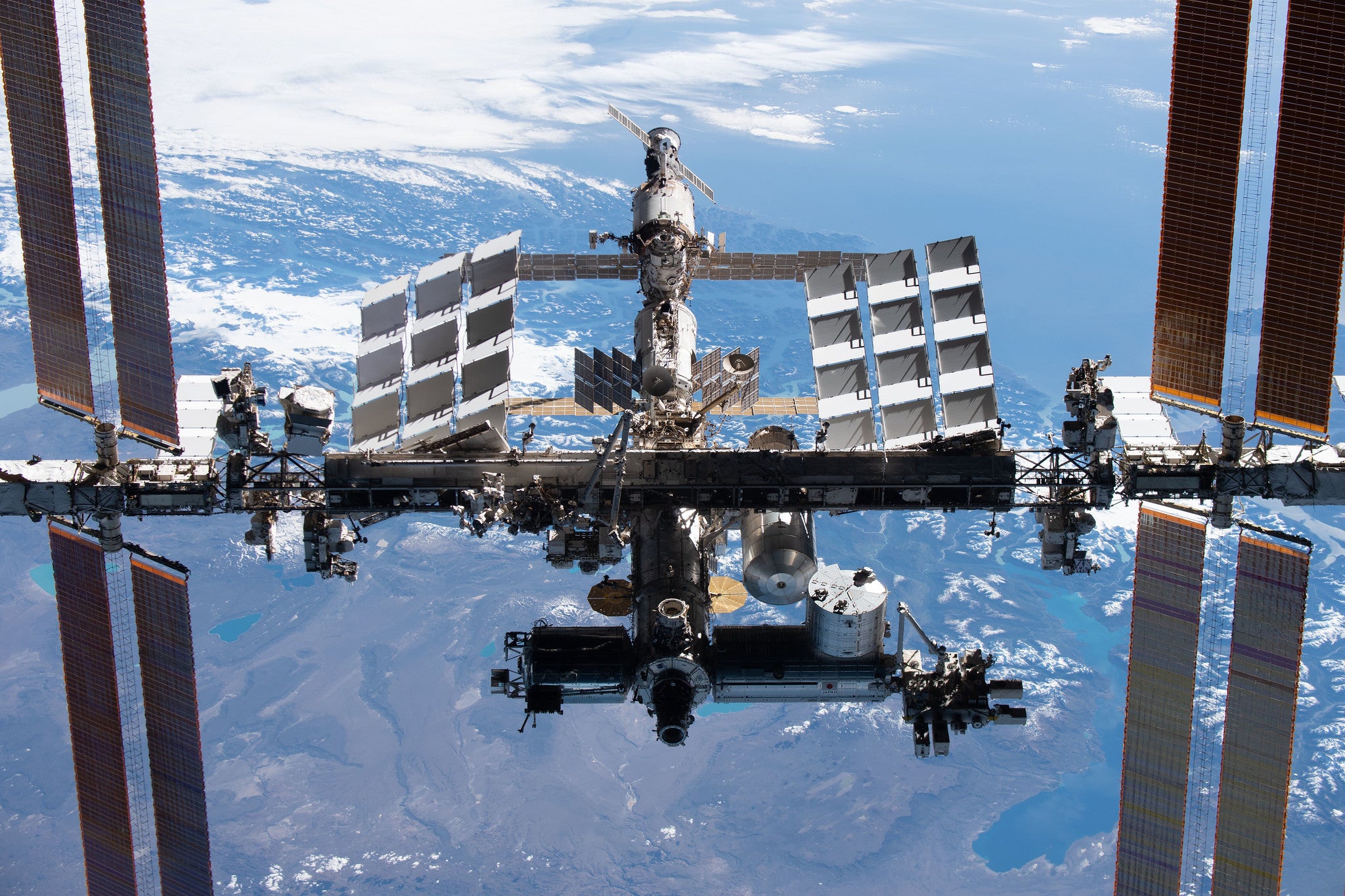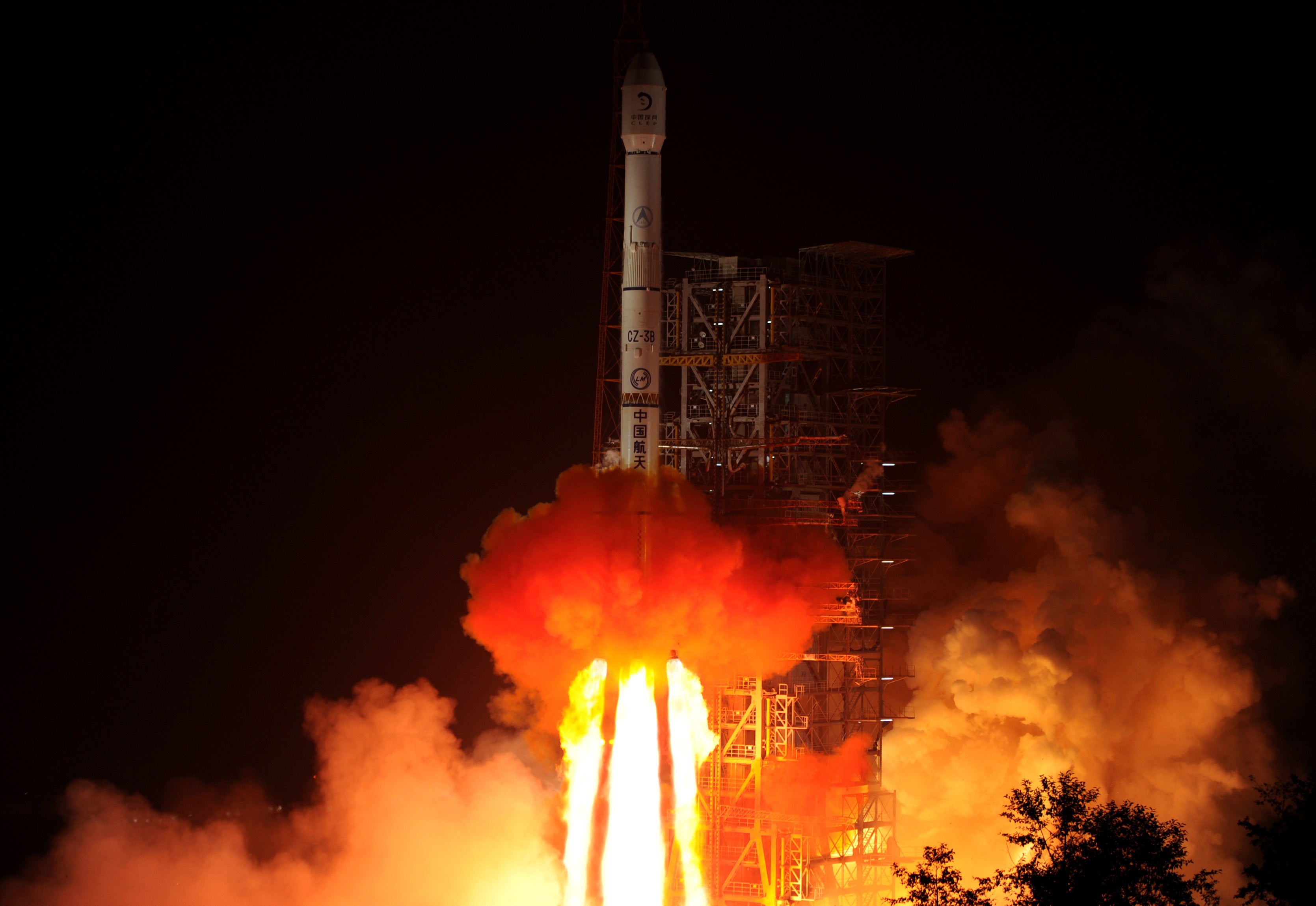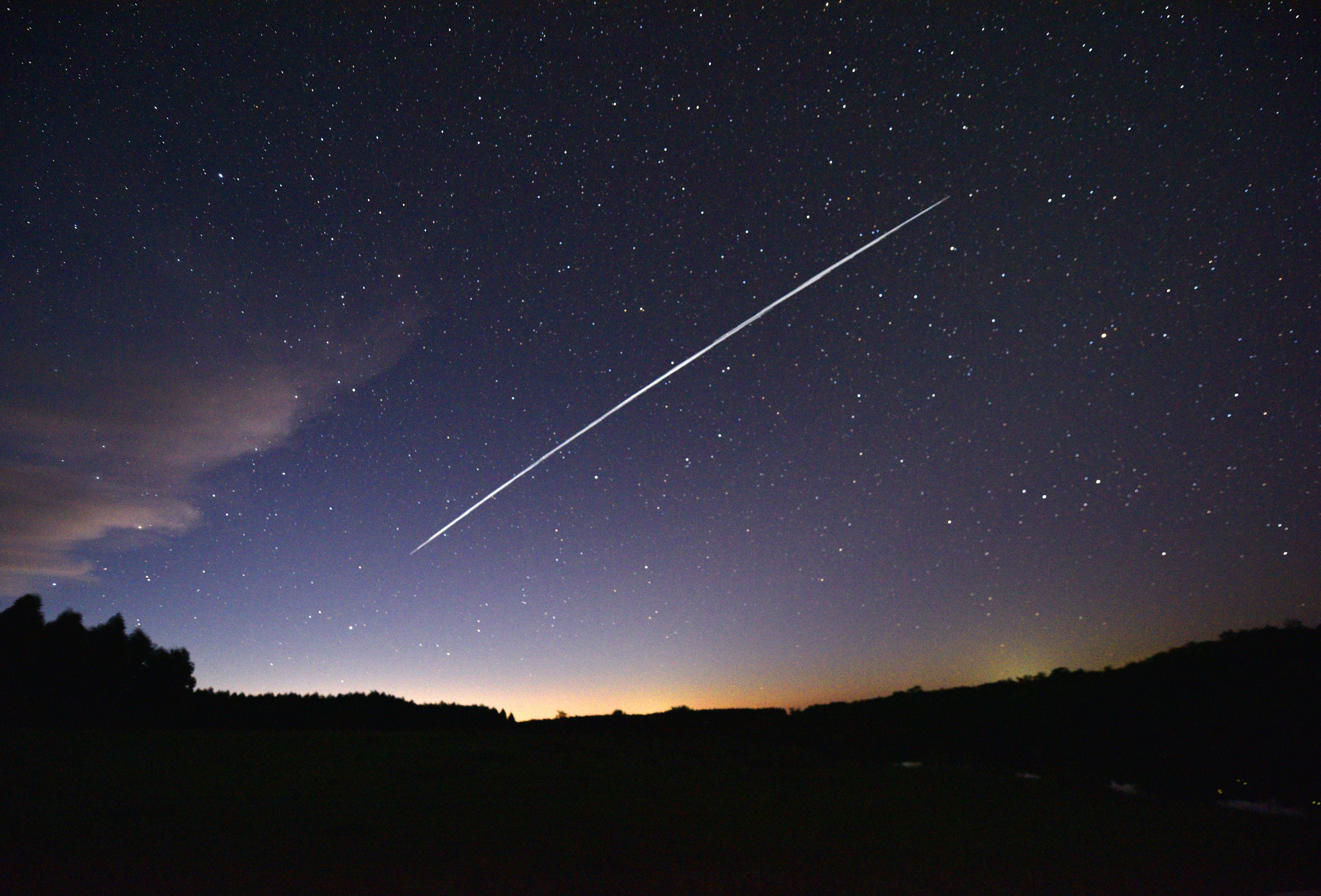‘Please take your rubbish home with you’: The problem of space debris
There is a real danger that our own activity is about to get the better of us and that low-Earth orbit will be lost to mankind – at least for a generation, writes Steven Cutts


In recent years there has been an increasing clamour of voices expressing concern about the state of our environment here on Earth. The quest for growth is stretching our planet to the limit and at the rate we’re going, there’ll be nothing left soon. Less well publicised is the impact we’ve already had on the world above our heads. Having ruined our own terrestrial environment, we are now proceeding to contaminate outer space in much the same way.
Outer space is a big place. The universe surely is too big to fail. It extends forever in all directions and for this and other reasons it’s hard to imagine how we could possibly do any harm there. Unfortunately, this isn’t the case. As far as the first few hundred miles go, there is now a real danger that our own activity is about to get the better of us and that low-Earth orbit will be lost to mankind – at least for a generation.
The vast majority of space launches have sent people and equipment just 200-300 miles above the Earth and there are now thousands of satellites in orbit. Very few of these satellites orbit in a perfect circle, most of them progress through a gentle ellipse until something brings them down. There’s a second category of satellites that loiter in geostationary orbit and these are about 35,000km out. Their trajectory follows a perfect circle and from the point of view of an observer here on Earth, they seem to occupy a fixed point in the sky. Equipment that goes any higher than this is something of a rarity and is – for the most part – scientific probes on their way to other planets. These represent only a very small proportion of space launches to date and are unlikely to cause any trouble.
So, how long will any of these satellites stay up? The critical question here is – where does the Earth’s atmosphere end? At first sight, it cuts out about 150 miles above our heads but, in reality, there are always a few individual molecules flying around even at the sort of height where the International Space Station (ISS) orbits. Every single second of every day the ISS collides with quite a few gas molecules and quickly knocks them for six. Every single collision represents a transfer of momentum out of the space station and into the gas molecules. Needless to say, none of the astronauts notice this but they know that it is happening and over a protracted period of many months, even a huge structure like the ISS loses altitude and descends into the denser layers of the upper atmosphere where drag becomes critical, and the spacecraft will ultimately crash. Probably the most famous example of this phenomena was the American space station Skylab, which crashed due to protracted air resistance in 1979. Having underestimated the speed at which its orbit would decay, the Americans had no means of raising its altitude.
For Nasa’s second space station, things were different. Many of the spacecraft that docked with it would fire their rocket engines for a while – albeit very slowly – and raise the altitude of the space station by several miles. In this way we’ve been able to repeatedly nudge the ISS back into a more secure orbit.

For telecommunication satellites in geostationary orbit, “drag” is largely an irrelevance and most of them will stay in orbit for several thousand years. In contrast, the majority of the more modern internet supply mini-sats have a much shorter operational life. Several companies are now in the process of launching constellations of thousands of very small satellites in very low orbits. The British company OneWeb intends to orbit at 300 miles, and this is a reasonably safe altitude. In contrast, Elon Musk’s Starlink constellations will orbit at a much lower, 180 radius miles and this system will have to be renewed on a regular basis as one unit after another burns up in the Earth’s atmosphere.
Worse still, some satellites have collided, showering thousands of fragments across the heavens. In order to grasp the kind of damage this debris could do, it’s important to grasp just how fast these fragments are travelling. In low-Earth orbit, a satellite is travelling at about 17,000 miles per hour (5 miles per second). If you come across another body travelling in the opposite direction at the same speed, the results can be dramatic. For example, an unidentified fleck of paint from a satellite that went up in the 1960s can do significant damage to a structure the size of the ISS. The ISS is designed to survive impacts from an object up to 1cm in diameter. Beyond that, the fate of the construct becomes uncertain.
Eager to make their own contribution, the Chinese government decided to deliberately destroy one of their own satellites in 2007
Satellites can drift out of position due to gravitational perturbations – the density of the Earth is far from consistent – and also when they get hit by photons from the Sun, which happens round the clock. If they aren’t actively maintained on station, even a geostationary satellite is unable to hold its position and there is an increasing vogue towards electric propulsion to achieve this. Yes – the ion drive of science fiction. Ion drive has the additional benefit that the emitted gas is unlikely to cause any trouble to future spacecraft. In contrast solid rocket boosters are notorious for emitting a fine powder of aluminium debris although again most of this is confined to low altitude.
In 2021, the US Space Surveillance Network was detecting around 21,000 objects in orbit around the Earth. Of these, about 5,000 were operational satellites. However, there are now thought to be more than 128 million objects smaller than 1cm. Quite apart from our own pollution, the combination of natural and manmade pollution now threatens to make low-Earth orbit simply too dangerous to use.

Eager to make their own contribution, the Chinese government decided to deliberately destroy one of their own satellites in 2007. In fact, they were testing an anti-satellite weapon system. Just in case they hadn’t done enough damage, this test was repeated in 2009, scattering debris in all directions. Much of the mess created is still up there.
Western condemnation of the Chinese government was fast and furious although one could argue that this did involve a degree of hypocrisy involved. As the military in all countries becomes more and more dependent on satellite communication and reconnaissance, it becomes imperative to be able to destroy rival satellites as soon as hostilities began. During the 1960s, America and the Soviets were trying this sort of thing with real gusto and at least some of the fallout is still with us today. As recently as 2019, the Indian prime minister, Narendra Modi, announced that he had ordered a test of his very own kinetic, anti-satellite weapon. So long as you achieve a direct hit, you don’t need to waste resources on an explosive warhead. Everything will be blown to smithereens by momentum transfer alone.
Many scientists began to worry that we might encounter a tipping point whereby the number of particles in low-Earth orbit would start to increase exponentially. Every day, a couple of reasonably large objects would collide by accident thus creating an explosion. In these circumstances, the usual speed of impact is believed to be around 10km per second. While the actual objects themselves might seem innocuous, it’s hard for us to imagine the transfer of kinetic energy involved. This explosion would release hundreds of other particles. In the end, we would end up in a nightmare scenario where any viable satellite launched would quickly be destroyed by collision with a kind of abrasive sand that would fill the whole of low-Earth Orbit.

One of the first people to recognise this was the American scientist Donald Kessler. In 1978, Kessler foresaw a future in which the sheer volume of debris in space would make further exploration impossible. Some studies suggested that this should have already happened, the fact that this hasn’t happened led other authorities to suggest that the Kessler was unreasonably bleak. But in the long run, Kessler may yet be proved right. How then could we escape from such a crisis?
Well, if we stopped launching anything at all for a while then at least some of the debris would re-enter the Earth’s atmosphere. This happens routinely and is a function of atmospheric drag. In time, the environment would effectively cleanse itself but particles at a higher altitude would take much longer to come down. The UN has recommended that any satellite that we now launch should be capable of re-entry within 25 years after it ceases to function. However, even this rather undemanding bit of regulation may be difficult to obey. In practice, Nasa thinks that one reasonably large object a day re-enters the Earth’s atmosphere and crashes. Since three-quarters of the Earth’s surface area is water, most of this goes unregarded. However, as we look forward to a future involving more and more activity in outer space, it’s hard not to become concerned that some collisions might prove catastrophic for a manned mission.
The good news is that within the industry there is now a heightened awareness of the whole issue and that it would be a tragedy for mankind if the worse happened and Kesler was proven right
While the matter received little publicity at the time, early space shuttle missions were plagued by impact with tiny particles. Of the first 67 space-shuttle missions, 177 impacts were recorded on the windows alone. This forced Nasa to fork out for an incredible 45 replacement windows and the windscreen on a space shuttle isn’t cheap. Bear in mind that this was in the 1980s. Since then, the amount of activity in low-Earth orbit has soared.
The good news is that within the industry there is now a heightened awareness of the whole issue and that it would be a tragedy for mankind if the worse happened and Kessler was proven right. Engineers are trying to change the way rockets are manufactured to reduce the number of smaller fragments released during the ascent.

Traditionally, the upper stages of most satellite launches were abandoned in Earth orbit and for many years this didn’t seem to cause any trouble. With mounting anxiety about the Kessler syndrome, many space agencies have started to look at ways of parking the rockets in safe orbits and/or consciously seeking to de-orbit them at a much earlier stage.
Part of the problem is philosophical. On this planet, a company or an individual that creates pollution can be prosecuted and forced to pay for the clean up required – think about the BP oil spillage in the Gulf of Mexico. In outer space, things gets more complicated. Recently, a particularly large rocket collided with the dark side of the Moon. For a while people thought it belonged to SpaceX although Elon Musk tried to deny this. Later, it was suggested that it might have been launched by China although again, the Chinese denied all responsibility. Since nobody lives on the Moon, it really didn’t matter very much but in the longer term this sort of thing will become a problem.
The European Space Agency (ESA) has a plan for a space tug to retrieve a satellite in orbit that has broken down and drag it down to a lower orbit where it would decay and re-enter the Earth’s atmosphere. Other groups have looked at using harpoons or even nets to bring down existing satellites. People have even suggested using ground-based lasers to zap the satellite from below and heat up its outer surface. As hot gas is released from the surface of the satellite, this would slow down its trajectory and drag it into a downward spiral towards that would end in disintegration in the Earth’s atmosphere.
The ESA has identified active debris removal technologies as a strategic goal and is working on a number of ideas right now. ESA has a clean space initiative that includes plans for innovative robots that would either remove defunct satellites from orbit altogether or leave them at a safe altitude
As things stand, SpaceX plans to release 12,000 small satellites into low-Earth orbit. Amazon has a similar plan, and this trend may soon see an additional 50,000 objects enter low-Earth orbit. This represents a precipitous increase in the number of objects in orbit and the means to retrieve them at the end of their useful life expectancy should surely be built into the original design rather than being an add on, introduced years after they cease to function.




Join our commenting forum
Join thought-provoking conversations, follow other Independent readers and see their replies
0Comments